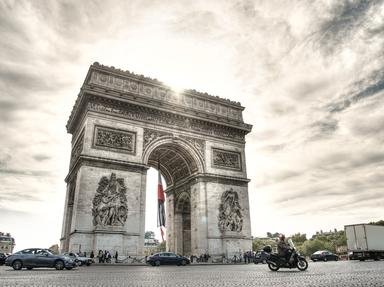Quiz Answer Key and Fun Facts
1. Already in the Middle Ages the "flower of the French knighthood" experienced surprising defeats. One such a case was a battle near Courtrai, now close to the French-Belgian border, during which the French knights sustained a crushing defeat at the hands of a force of Flemish weavers and other workmen. What was the name given to this battle in which "a super-de-luxe cavalry army " was defeated by mainly proletarian infantry ?
2. Like the later Battle of Agincourt (1415), the Battle of Crécy (Aug. 26, 1346) was fought between a retreating English army and a French army trying to interpose itself between the invaders and the Channel ports.
3. The decisive factor in the battle of Crécy was undoubtedly the introduction of new weaponry. What was the new type of weapon that the English put to good use at Crécy?
4. The French defeat at Crécy also led to the loss of one of their ports which was to remain in English hands from 1347 till 1558. Which of these ports?
5. Which Norman port had been conquered by Henry V in August 1415, shortly before he had to fight the Battle of Agincourt (Oct. 25, 1415)?
6. John Churchill was an extremely successful English general who was victorious in all the sieges he laid. He defeated the French at Blenheim (1704), Oudenaarde (1708) and at Malplaquet (1709). Under what more ceremonious name is he usually referred to?
7. What did Napoleon promise his lieutenants, when deploying his troops for an attack along the Charleroi-Brussels road?
8. After Napoleon the Great there still followed Napoleon the Third. He launched the Franco-Prussian War in 1870. He rather stupidly let himself be manoeuvred into a position where he could be encircled by the Prussians and finally had to surrender to them. Which of these is the small fortress city in the French Ardennes where the Prussians surrounded his troops and captured him?
9. In the Franco-Prussian War, the Prussians, after capturing Napoleon III, resumed their march on Paris and soon encircled the French capital. Who was the French leader who still managed to escape in a balloon in an attempt to organize the war effort in the French provinces?
10. The most recent of France's Waterloos was probably the Battle of Dien Bien Phu, where the Vietnamese General Vo Nguyen Giap taught them a lesson in shrewdness and efficiency. A typical detail how "Gallic" the French approach to the war was the type of names they had given to the ten "strong points" that had to defend Dien Bien Phu. What sort of names had been chosen?
Source: Author
flem-ish
This quiz was reviewed by FunTrivia editor
bloomsby before going online.
Any errors found in FunTrivia content are routinely corrected through our feedback system.
